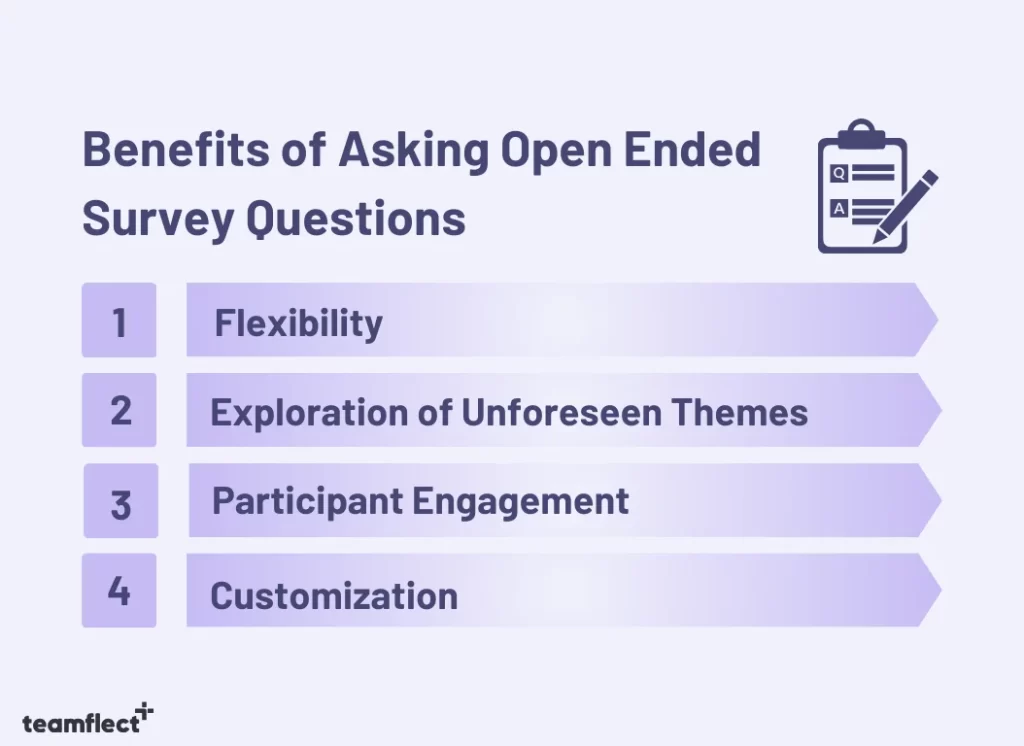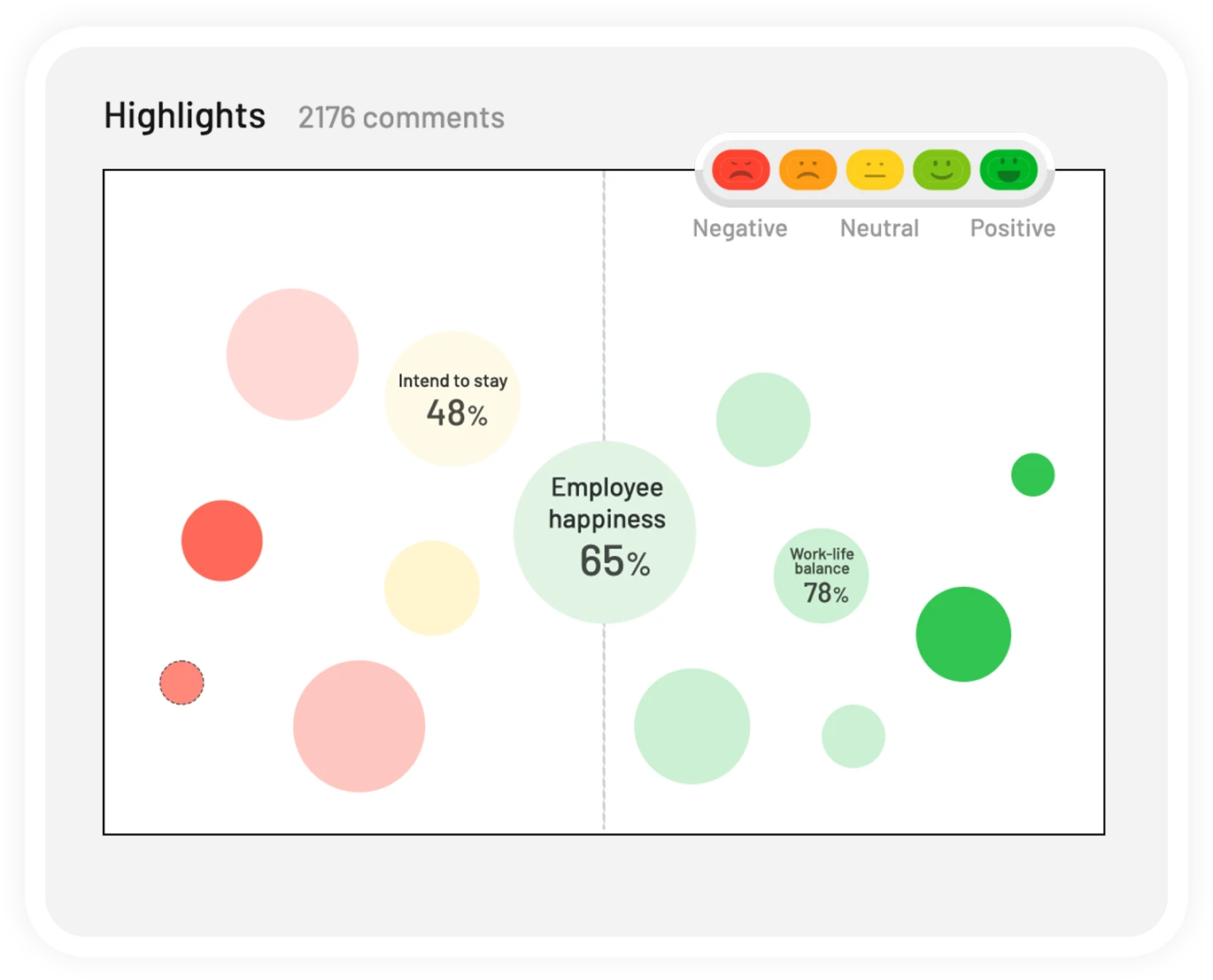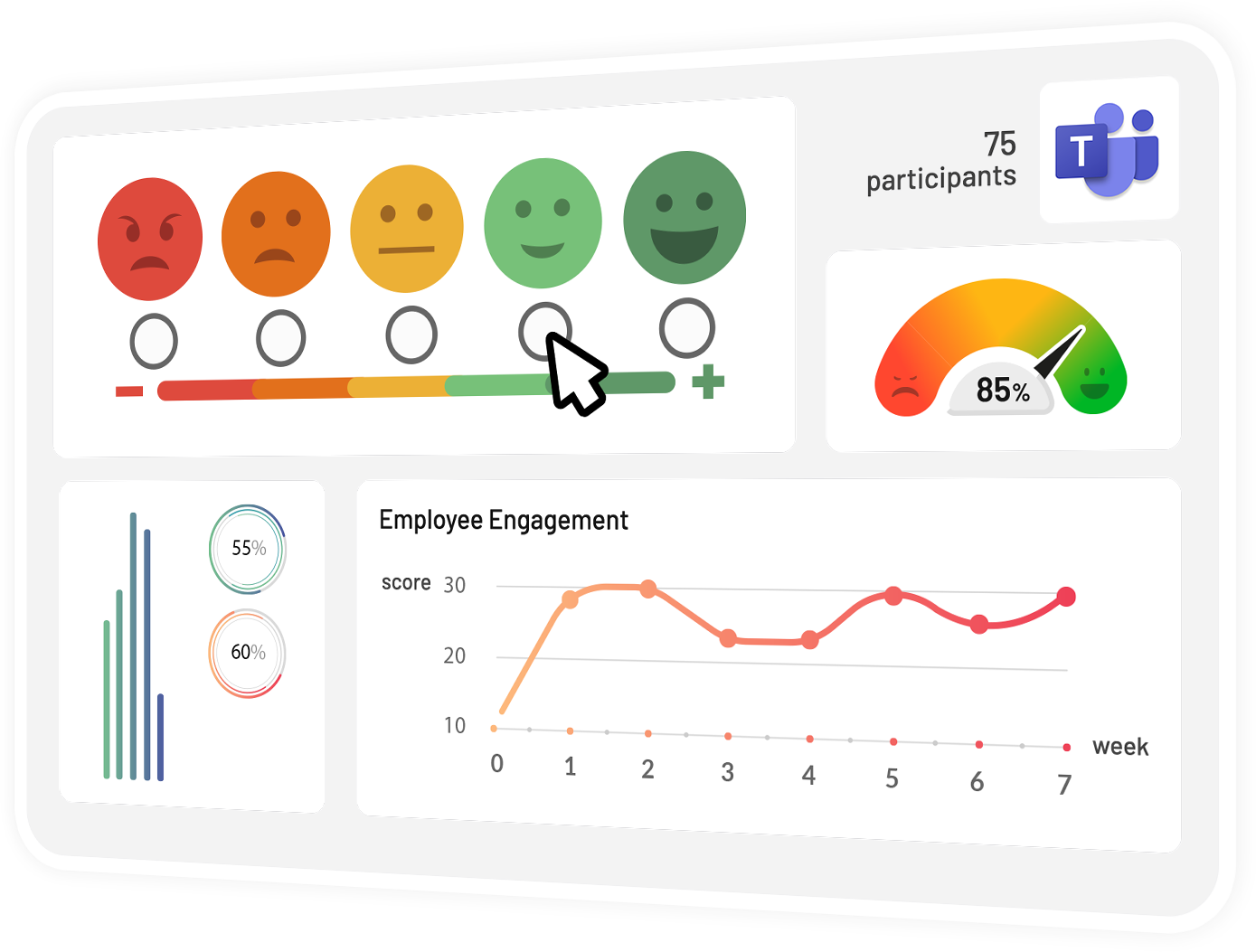Are you curious about employee surveys, open ended survey questions and what they are all about? Well, you’ve come to the right place!
In today’s fast-paced and competitive business environment, employers are always looking for ways to improve employee engagement, productivity, and job satisfaction.
Employee engagement surveys are used as tools that can help you achieve these goals by gathering valuable feedback from your workforce.
You can include different formats of questions in an employee survey such as open ended survey questions, multiple choice questions, scale questions, etc.
But today, we’ll talk about the importance and benefits of open ended survey questions, and how you can implement them in your employee surveys.
Without further ado, let’s get started!
Table of Contents
What is an Open Ended Survey Question?
Open ended survey questions are questions used in surveys or research where respondents are free to provide detailed, unrestricted answers in their own words.
Unlike closed ended questions that give predefined answer choices, you can express your thoughts, opinions, feelings, or experiences without being constrained by pre-set options in open ended survey questions.
What Kind of Data You Get From Surveys with Open Ended Questions?
Open ended survey questions are designed for collecting qualitative data in which you can gain a deeper understanding of respondents’ perspectives, motivations, and emotions.
Because respondents are free to respond in their own words, open ended survey questions can uncover unexpected information and nuances that might be missed by more structured survey formats.
Why Should You Use Open Ended Survey Questions?
Yes, we think you should include open ended survey questions in your next pulse survey. Why? Because with open ended survey questions, your employees can give detailed, personalized, and context-rich responses.
You can understand their thoughts, feelings, experiences, and motivations more clearly, which is often difficult to achieve with closed-ended questions.
Closed-ended questions are limited to the provided response options, potentially missing out on issues or perspectives that you might not anticipate beforehand.
Open-ended survey questions give respondents the freedom to introduce new topics or concerns that might not have been considered otherwise.
When to Use Open Ended Survey Questions?
Survey with open ended survey questions are best used in situations where you need detailed qualitative insights.
They’re great for exploring new topics, tackling complex or sensitive issues, and collecting in-depth feedback on products or experiences.
Open-ended questions are particularly effective for understanding employee motivations, generating hypotheses, and diving into customer insights.
They’re essential for qualitative research methods, like case studies, and can aid in pilot testing and question refinement.
Benefits of Asking Open Ended Survey Questions

Now that you know when you should use open ended survey questions, let’s discuss the benefits. Although using open ended survey questions comes with many benefits, we’ve just included 4 of them today.
1. Flexibility
Employee survey open ended questions don’t restrict respondents to predefined answer choices.
Having a flexible setting in employee pulse surveys is particularly useful when you’re exploring a topic that may have diverse or unexpected perspectives that you haven’t thought of.
2. Exploration of Unforeseen Themes
Because respondents aren’t limited to predetermined options, open ended questions might uncover unexpected themes, insights, and issues that you might not have considered when designing the survey.
3. Participant Engagement
Respondents might feel more engaged and valued when they’re given the opportunity to express themselves in their own words.
Open ended survey questions create a sincerity which leads to higher response rates and more thoughtful answers.
4. Customization
You can customize and tailor open ended questions for specific respondents to make sure you capture their individual experiences and perspectives accurately.
Also, respondents can customize their responses as they wish, which gives room for realistic and sincere answers.
Cons Of Using Open Ended Survey Questions
Just like everything else, open ended survey questions also come with some downsides.
1. Time-Consuming Analysis
Open-ended responses can be more time-consuming and labor-intensive to analyze compared to closed-ended responses.
Coding, categorizing, and interpreting textual data can become a hassle, especially in large-scale surveys.
2. Subjectivity in Analysis
The analysis of open-ended responses involves interpretation and subjective judgment. Different analysts might categorize and code responses differently, leading to potential variations in findings.
3. Lack of Standardization
Open ended survey questions can result in a wide range of responses that might not be directly comparable. Closed-ended questions with predefined response options offer more standardized data.
4. Difficulty in Quantification
Open ended data are inherently qualitative, making it challenging to quantify responses for statistical analysis. This can limit the ability to generate quantitative measures and statistical comparisons.
How To Ask Open Ended Survey Questions: Using Teamflect
If you’re looking for a way to create surveys with open ended survey questions, you should definitely use an employee engagement survey software. We have collected the 20 best employee pulse survey tools before in our blog, but our most solid suggestion is still Teamflect!
In a scenario that your organization uses Microsoft Teams as the main collaboration tool, your only choice of survey software should be Teamflect.
As it is tailor-made for Teams, Teamflect comes with seamless Microsoft Teams integration and many features that will help you in creating surveys.

When creating open ended survey questions, you need a robust and versatile tool. With Teamflect, you can conduct pulse surveys such as anonymous employee surveys and onboarding surveys easily, right inside Microsoft Teams.
That’s not even all! You’re not just conducting surveys in Teamflect. You can also convert the data from those surveys into Power BI reports, and then act on the information they’ve collected through those pulse surveys.
Key Features:
- The best survey tool for Microsoft Teams
- Easy to navigate dashboard
- 360-degree feedback
- Task management
- OKR management
- Customizable feedback templates
- Customizable performance review template gallery



